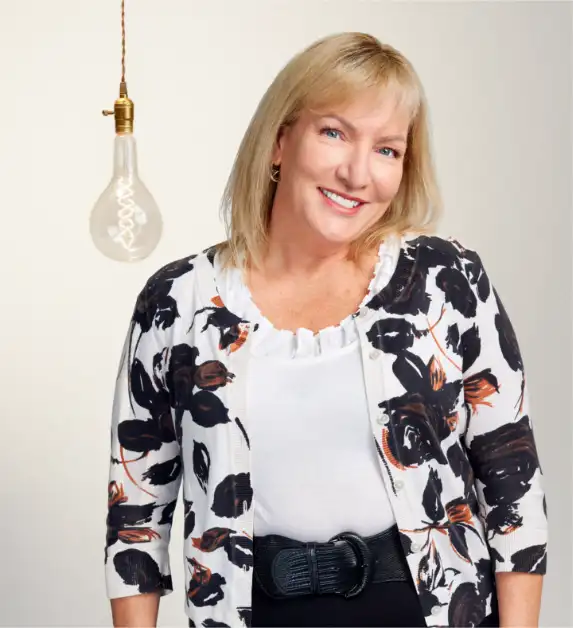
Want to Know How to Catch and Keep a Neurologist’s Attention? You Just Saw It: Ask a Question.
by Kat Mallanda
Over a decade of personal experience in assimilating attitudinal market research and a bounty of direct knowledge—as well as according to numerous career advancement counselors—it is widely known that Neurologists are investigative, social, and realistic. And this makes perfect sense when you think about what it takes to work with disorders of the CNS, which encompasses the brain and spinal cord (and connects to peripheral nerves and muscles). It’s a common belief that the CNS remains the ultimate puzzle, making the nature of neurology investigative not only in the lab, but in the clinic. Many CNS conditions are challenging to diagnose; a large number require trying one treatment and adjusting (including switching and adding on) until the optimal therapeutic effect is reached for that patient. It’s no surprise that neurologists possess higher levels of openness to experience compared to non-neuroscience specialties.1 Give them a puzzle to solve that activates multiple intelligences, and you will have a captive audience.
CNS complexity means that finding a “typical” CNS patient is rare and so treatment approaches are often tailored. Outcomes, too, are individualized, quite frequently based on patient-reported outcomes vs hard data. This fine-tuning can be frustrating to both neurologists and patients—and that’s where neurologists’ sociability emerges as a profound strength. Eliciting feedback from patients and then translating a patient’s metaphors and imprecise descriptions into valuable information that can be used to assess treatment response requires building the kind of trust and rapport that only comes from deep listening and being fully present to what is often a subjective and confounding expression of a patient’s personal experience. Being encouraging and keeping the patient—and their families—focused on a better future with care and compassion taps directly into the neurologist’s propensity for sociability. They also wisely know that not all CNS puzzles can be fully solved, but improvement—more specifically, the reduction of suffering—is their guiding goal. Despite the very real burdens of empathy fatigue present in this dynamic, on the whole, neurology is the specialty most likely to take the time to work with a patient to understand symptoms and their causes.1
But there is a cost in providing such individualized care: we have a global shortage of neurologists, due in large part to an aging population increasingly suffering with neurodegenerative conditions and a cascade of referrals that do not necessitate neurologist intervention. One solution that has helped optimize resource utilization has been Teleneurology (TN). The first use of TN was to evaluate stroke at hospitals without neurologists on site. Telestroke evaluations showed noninferiority compared with face-to-face encounters, making TN a realistic interventional tool in managing limited resources. Adoption of TN was fueled by COVID-19. In 2020, neurology practices had one of the highest uptake rates for telemedicine (47.9% of total visits) and a smaller decline in total visits when compared with other specialties as neurologists became comfortable with the fact that many time-intensive evaluation and management services can be performed remotely.
This gives us all a lot to think about, which is great because neurologists really like to exchange ideas.2 In fact, one of the most successful in-person commercial ad boards I’ve ever seen featured breakout groups where the neurologists worked together on their group’s assignment of solving a unique problem. Of course it worked—the format fulfilled their investigative, social, and realistic inclinations!
When BGB Group develops communications for neurologists, we keep their attributes top of mind. We prioritize their brain’s need to be engaged vs “told” (investigative), ensure patient centricity is top of mind (social), and lastly, we don’t overpromise (realistic). The result? BGB Group creates communications and campaigns that resonate with a neuro’s core attributes and values, which in turn inspires action.
As creators of content—both in words and visuals—the Team at BGB Group operates quite similarly to neurologists.
- We investigate the data combined with customer insights to find those core differentiators neurologists seek
- In pharma communications, storytelling is highly collaborative, and therefore social
- And in finding the balance between what you’d want to say and what regulators allow to be said—well, that’s realistic
There you have it: BGB vibes on the fact that neurologists are investigative, social, and realistic, because in living at the intersection of Science + Creativity, so are we; what about you?
References:
- Surbeck W, Samuel R, Spieler D, et al. Neurologists, neurosurgeons, and psychiatrists’ personality traits: a comparison. Acta Neurochir (Wien). 2020;162(3):461-468. doi:10.1007/s00701-020-04233-9
- Griffin JW. Training matters in neurology. Nat Rev Neurol. 2006;2:345. doi:10.1038/ncpneuro0240